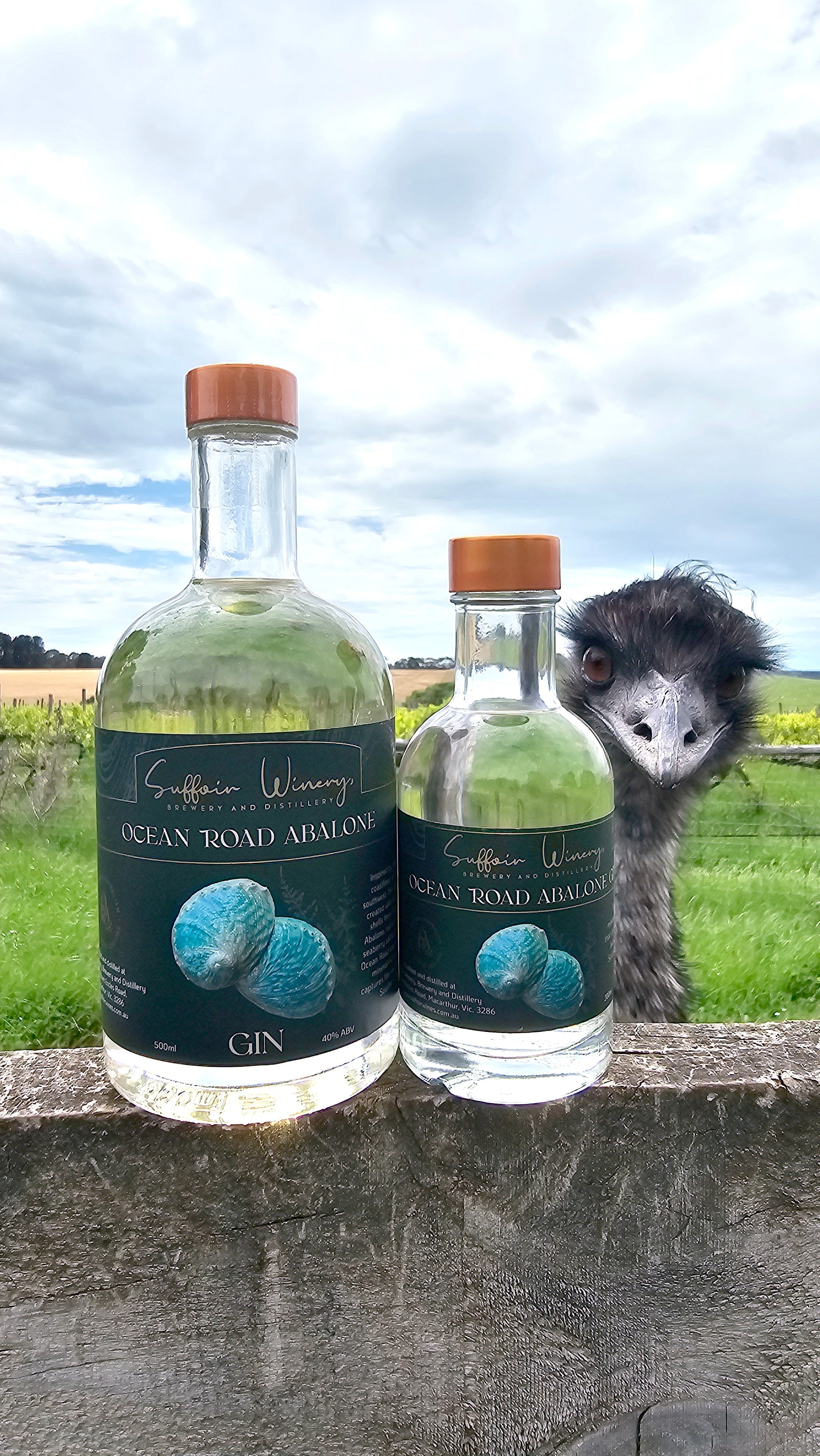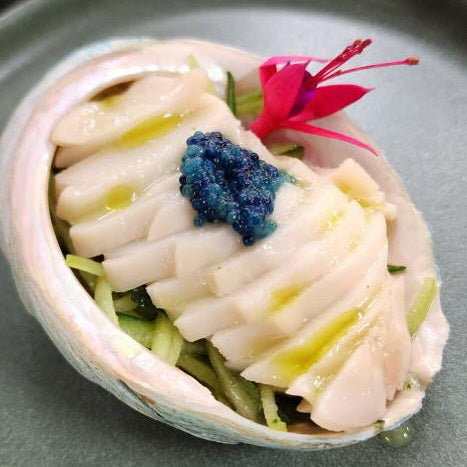Nutrition & health
The nutritional and health benefits of Australian tiger abalone
Ocean Road Abalone farms Australian tiger abalone, raised from greenlip abalone (Haliotis laevigata) and blacklip abalone (Haliotis rubra) family lines. Australian tiger abalone does appear in wild populations and was developed for aquaculture along Australia’s southern coast.
The nutritional information below is based on published data for farmed greenlip and blacklip abalone, as reported by CSIRO, Food Standards Australia New Zealand (FSANZ) and the Fisheries Research and Development Corporation (FRDC).
Abalone is one of Australia’s most nutrient-dense seafoods, high in protein, naturally low in fat and cholesterol, and a valuable source of essential vitamins and minerals, supporting a balanced, modern diet based on quality Australian produce.
A natural source of lean protein
Australian tiger abalone provides around 17–19g of protein per 100g serve. This lean, complete protein supplies all nine essential amino acids that the body cannot make on its own. Protein supports muscle repair, immune health and healthy skin, hair and nails.
The Australian Dietary Guidelines recommend including seafood at least twice a week for these reasons. Incorporating abalone into a rotation of seafood meals contributes to that intake, offering variety and a premium Australian source of marine protein.

Low in fat, cholesterol and carbohydrates
Abalone is naturally low in total fat, typically under 1g per 100g, and very low in saturated fat. It also contains almost no carbohydrates, making it suitable for low-carb or high-protein diets. Studies from the CSIRO and Heart Foundation show that replacing higher-fat meats with lean seafood can help maintain healthy cholesterol levels and support heart health. Abalone’s delicate lipid profile aligns with those recommendations, making it an excellent choice for people managing their dietary fat intake without compromising on flavour or texture.
For those following higher-fat eating styles such as keto or high-fat low-carb diets, it pairs well with quality oils, butter, cream or mayonnaise to boost healthy fats while keeping meals balanced and satisfying.
Rich in omega-3 fatty acids
Like many cold-water shellfish, our abalone contains long-chain omega-3 fatty acids (EPA and DHA), known for their role in heart, brain and eye health. Omega-3s contribute to normal blood lipid levels and may help reduce inflammation. While abalone’s omega-3 content is moderate compared with oily fish, it still makes a meaningful contribution to overall intake, especially when paired with other seafood across the week.
Essential vitamins and minerals
Tiger abalone is a natural source of several micronutrients important for energy, metabolism and overall wellbeing:
- Iron, which helps transport oxygen and supports energy production
- Magnesium, needed for muscle and nerve function
- Phosphorus, for bone and cell health
- Potassium, which helps regulate blood pressure
- Iodine, essential for thyroid function
- Vitamin B12, critical for red blood cell formation and brain health
These nutrients occur naturally, reflecting the mineral richness of the clean Australian coastal waters. Regular inclusion of shellfish such as abalone can help fill common nutrient gaps, particularly iodine and B12, which are sometimes low in limited diets.
Anecdotally, we find that even people who say they don’t usually enjoy seafood often like abalone, especially our ready-to-serve abalone offered at farm-tour tastings, thanks to its mild flavour and delicate texture.
Heart and brain health
Australian and international health authorities recognise seafood as a cornerstone of heart-healthy eating patterns. Lean seafood such as tiger abalone contributes high-quality protein, omega-3 fatty acids and micronutrients while keeping saturated fat and sodium low. Together, these factors support cardiovascular health, healthy blood pressure and cognitive function.
The Heart Foundation notes that the combined benefits of seafood intake, including omega-3s, minerals and nutrient density, are linked with lower risk of coronary heart disease when eaten regularly as part of a balanced diet.
Metabolism and recovery
Protein-rich foods like tiger abalone help maintain lean muscle mass and stable energy levels. For active people, seafood protein supports post-exercise recovery thanks to its complete amino acid profile and naturally occurring minerals. Magnesium and phosphorus further contribute to muscle and nerve health, while B-vitamins help convert food into usable energy.
Because abalone is low in fat and energy-dense nutrients, it can be part of a variety of eating styles, from high-protein or low-carb diets to balanced Mediterranean-style plans.
How to include abalone in a balanced diet
Fresh-from-the-market or ready-to-serve canned or retort tiger abalone can be sliced thin, scored, minced or served whole - charred, seared, steamed, barbecued, crumbed, sashimi or added to soups, salads, stir fries, poke bowls, dumplings or even pizza.
Pairing abalone with vegetables, grains, stocks, healthy fats or other meats creates a complete, satisfying meal that aligns with dietary guidelines for nutrient diversity and moderation. The surf & turf with abalone at the Whalers Hotel in Warrnambool is a great example of pairing steak with abalone for a nutritional powerhouse. Traditional abalone soups often include nourishing ingredients such as chicken, fish maw, shiitake mushrooms, goji berries or ginseng, simmered in mineral-rich stock for depth and balance.
Choosing sustainably farmed Australian abalone ensures a consistent, traceable source of seafood grown to strict environmental and biosecurity standards.
To learn more about how we grow our tiger abalone, join one of our farm tours.
For recipes, visit our abalone recipes page.

References
- CSIRO. Seafood and health: the role of omega-3s and lean protein in Australian diets.
- Australian Government National Health and Medical Research Council. Australian Dietary Guidelines.
- Heart Foundation. Position statement on fish, seafood and heart health.
- Food Standards Australia New Zealand (FSANZ). Nutrient tables: seafood composition.
- Fisheries Research and Development Corporation. Nutritional composition of Australian seafood.
- FAO. The role of seafood in sustainable and healthy diets.
Keep reading

Something really special is distilling between the coastal dunes of Port Fairy and the foothills of Budj Bim National Park, and it’s now available at the cellar door, selected markets and possibly ...

Health benefits of Australian tiger abalone: an evidence-based guide
Abalone is more than a joy to eat – it’s a naturally lean, high-quality protein that supports everyday wellbeing. Discover how our Australian-grown tiger abalone delivers clean, balanced nutrition ...

Australian abalone: a Sea Country food
Abalone has long been popularly associated with Chinese feasts and reunions, and with good reason, but in many places around the world, including Australia, abalone is an Indigenous ingredient with...
